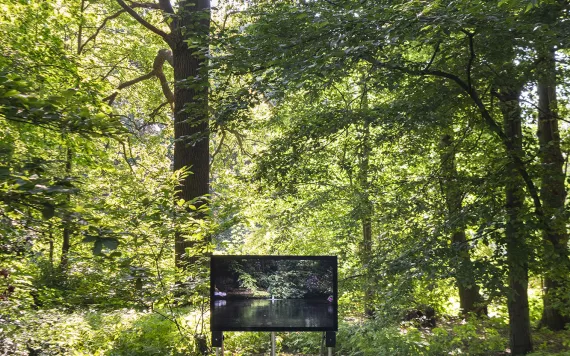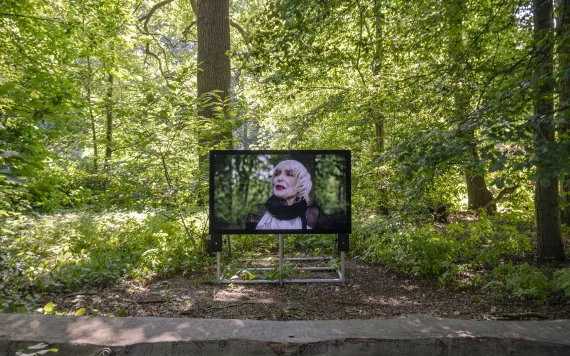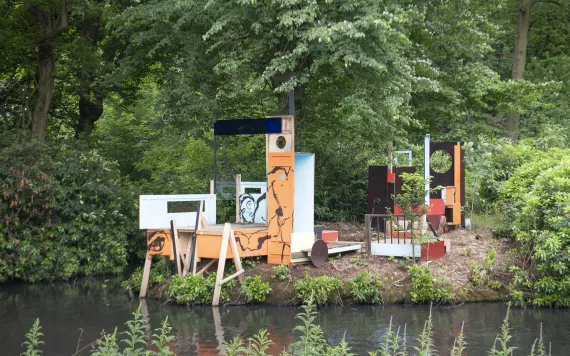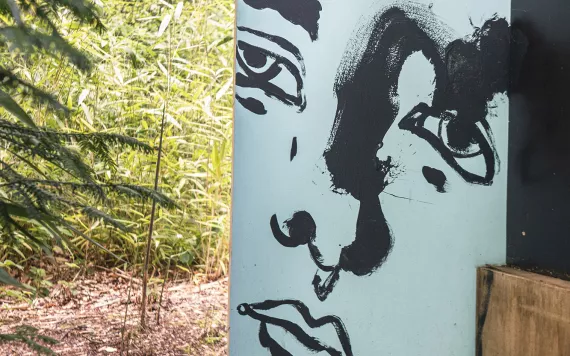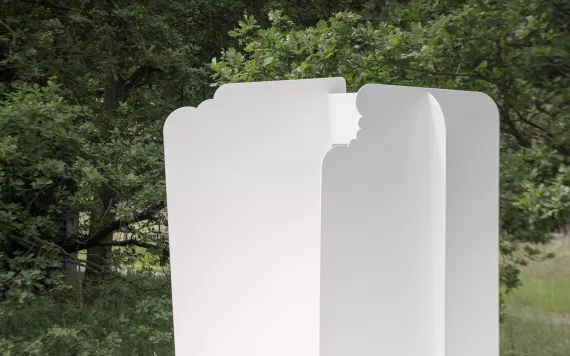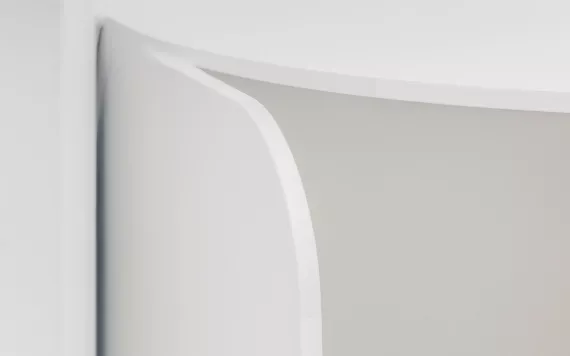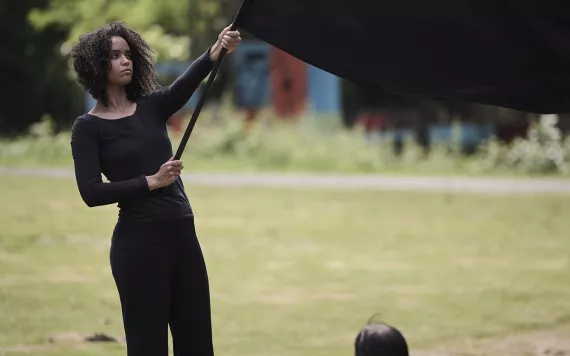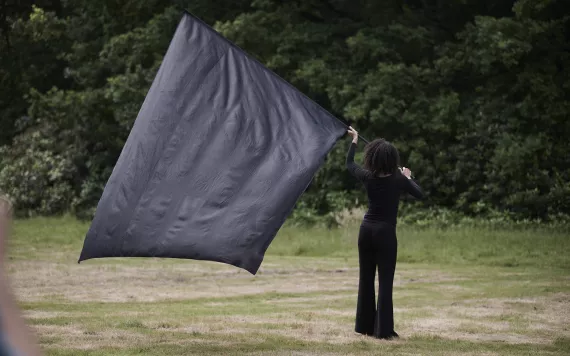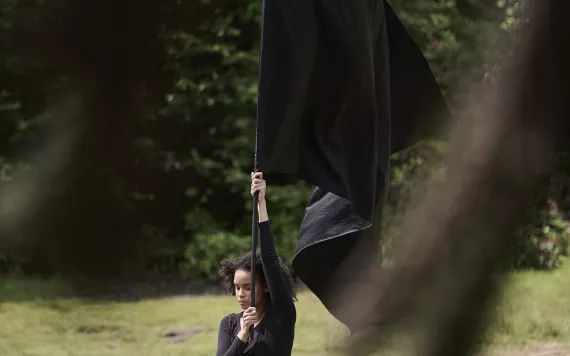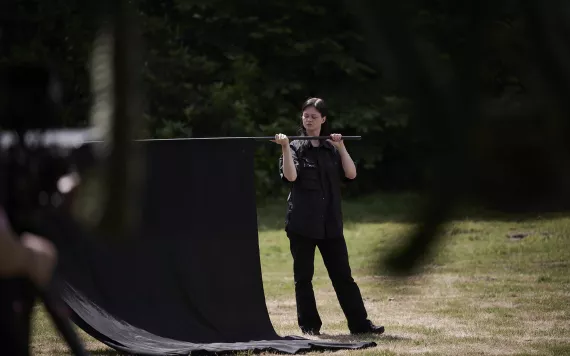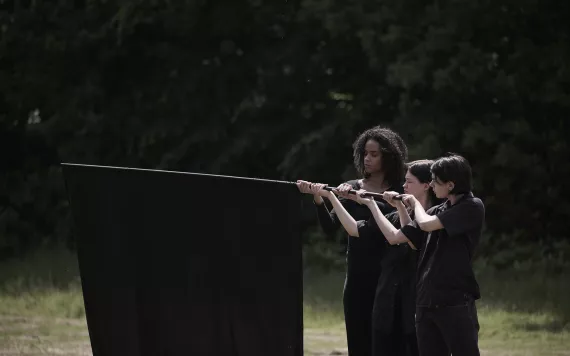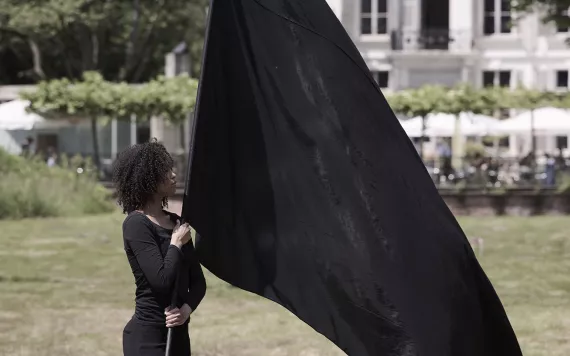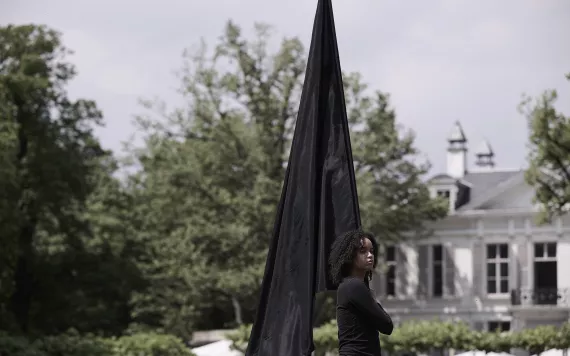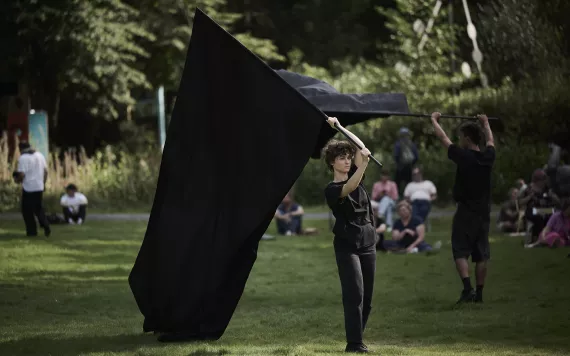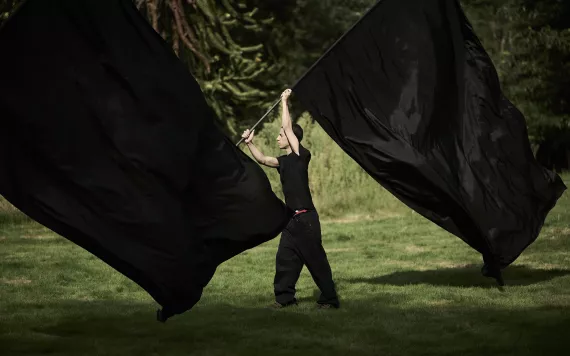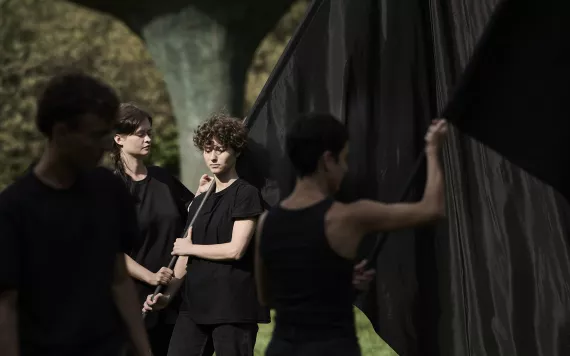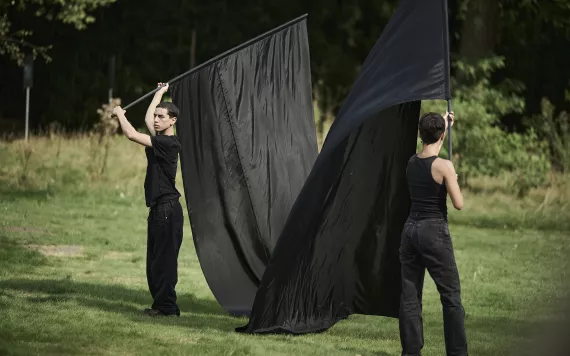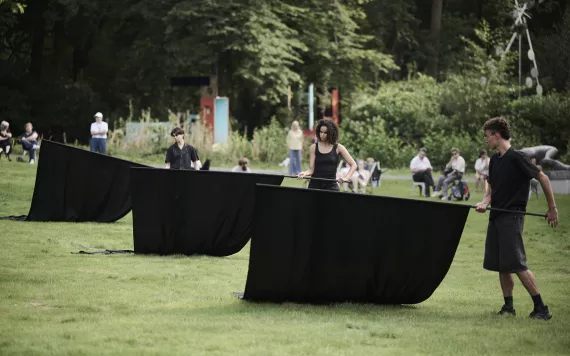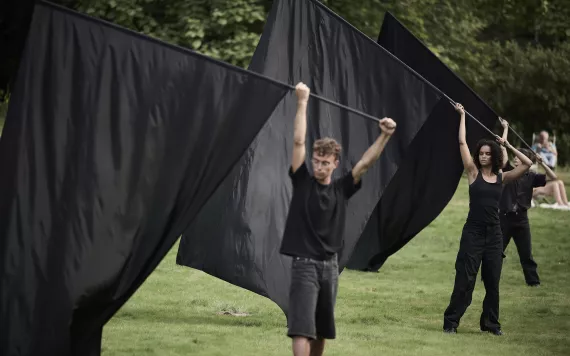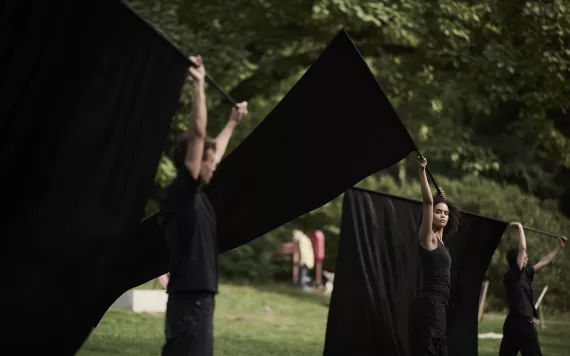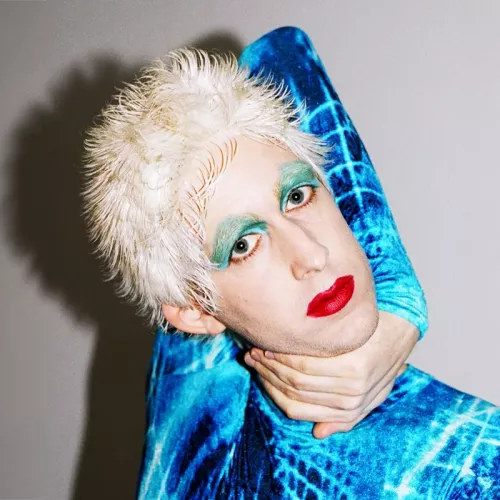
Artist Talk #4 - the works
Which artworks will be discussed in Artist Talk #4?
What remains after a performance is over? Where exactly is the artwork then, and how does it relate to the context of a museum collection? Paul Kindersley, Ula Sickle, and Sarah & Charles explore these questions in their artworks. Museum director Sara Weyns engages in conversation with them during the fourth and final COME CLOSER Artist Talk. Here's an overview of the works they created for the exhibition.
Paul Kindersley
The Dreamer of the Forest (video + installation, 2024)
Paul Kindersley brings the ‘characters’ in the Middelheim collection to life. Together with other performers he puts himself in the shoes of artworks such as Madame Stone by Charles Despiaux or the Dreamer of the Forest by Ossip Zadkine. Then he adds other roles. The video sculpture is a simultaneous performance, filmset and tableau vivant. The roles are different in each performance. Identical elements appear differently each time.
Sarah & Charles
Puppetry & Puppets (2024)
No puppet show or puppets to be seen, only the puppet theatre. The sculpture is waiting to be played by you. Without the typical puppets, you can give our own fantasy a free rein. No Punch or Judy, no king, hunter or witch. Feel free to think up your own story and characters. It can create very amusing or very serious theatre. It makes us think about the restrictive rules we set ourselves.
Ula Sickle
Relay (unplugged) (2024)
In a long performance lasting several hours, a group of performers hold a black flag in the air. A symbol of protest, the constant motion of the flag in the wind is a fascinating test of endurance. Each performer keeps the flag moving individually but above all, it is the joint effort that makes Relay so powerful. Waving a flag can start with one individual. Keeping it moving is, for the artist, a collective responsibility.
Relay (Extended) (2024)
In a long performance lasting several hours, a group of performers hold three black flags in the air. A symbol of protest, the constant motion of the flag in the wind is a fascinating test of endurance. Each performer keeps the flag moving individually but above all, it is the joint effort that makes Relay so powerful. Waving a flag can start with one individual. Keeping it moving is, for the artist, a collective responsibility. In this extended version of the performance nine performers partner with the wind to keep three flags afloat.

